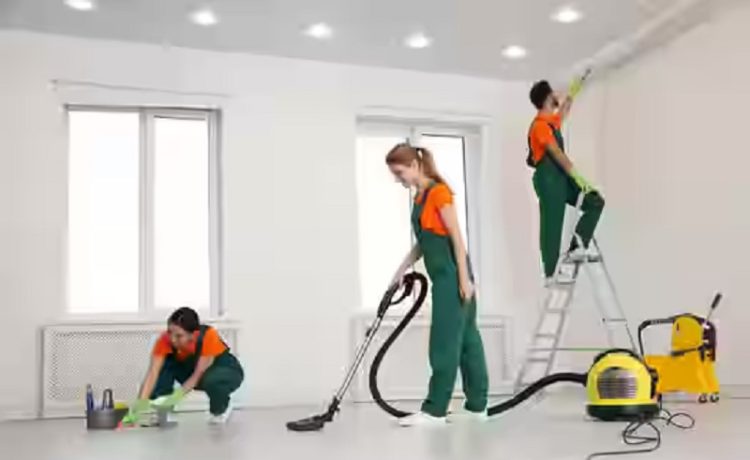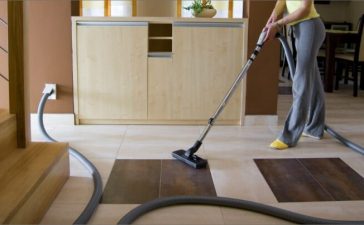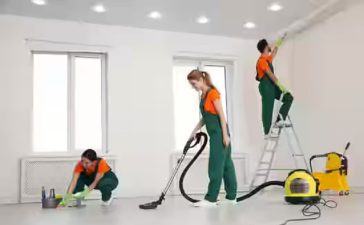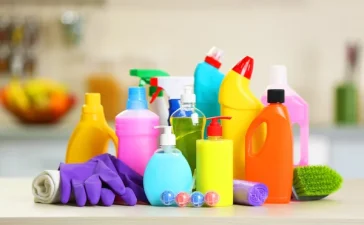In the ever-evolving world of cleaning and maintenance, two approaches often dominate the conversation: the use of specialized products and the creation of structured checklists. Both are crucial elements in maintaining a clean, well-kept environment, but the question remains—what works best for achieving a consistently clean and organized space? The answer, as with most things in life, depends on several factors, including the specific tasks at hand, the individual’s preferences, and the nature of the environment being maintained. In this article, we will explore the benefits and limitations of both products and checklists in the context of cleaning and maintenance, providing insights into which approach, or combination of approaches, may work best for your needs.
The Power of Specialized Cleaning Products
Cleaning products have long been seen as the foundation of effective cleaning. With the vast array of products available—ranging from all-purpose cleaners to specialized solutions for glass, wood, and upholstery—it’s easy to assume that the right product can make all the difference. But while cleaning products undeniably serve an important function, their effectiveness often hinges on proper usage and the context in which they’re applied.
Benefits of Specialized Cleaning Products
-
Precision and Efficiency
Specialized products are designed to target specific cleaning challenges. For example, a degreaser will be far more effective at removing kitchen grease than a general-purpose cleaner. Similarly, glass cleaners are formulated to leave windows streak-free, while upholstery cleaners are designed to protect fabrics while lifting dirt. By using the right product for the right task, you can reduce the time spent cleaning and achieve superior results. -
Convenience and Ease of Use
Cleaning products, particularly those in spray bottles or ready-to-use formulations, offer convenience that a generic checklist might not always account for. With a product designed for a specific purpose, the steps become more straightforward—spray, wipe, and repeat. Many people find this simplicity appealing, especially when they are short on time or energy. Cleaning products also provide peace of mind in knowing that you are using a solution that has been tested and optimized for a particular surface or material. -
Hygiene and Safety
Certain areas, such as kitchens and bathrooms, require cleaning products that offer antibacterial or disinfecting properties. These products can help eliminate germs, bacteria, and viruses that may linger in areas with high foot traffic or exposure to moisture. Without the right cleaning products, it may be difficult to achieve the same level of sanitization, making these products crucial for maintaining a healthy environment.
Limitations of Specialized Cleaning Products
-
Over-reliance on Products
One of the potential drawbacks of focusing too heavily on cleaning products is the tendency to rely on them without addressing broader maintenance needs. While products are effective for surface-level cleaning, they do not always encourage the deeper organization or structural maintenance that a checklist can address. Additionally, the sheer variety of products available can lead to confusion, wasted time in selecting the appropriate one, or even the accumulation of unnecessary products that clutter storage spaces. -
Cost and Environmental Concerns
The costs associated with purchasing various cleaning products can quickly add up, especially if you opt for specialized solutions for every task. Furthermore, many commercial cleaning products contain harsh chemicals that can be harmful to the environment. For those concerned with sustainability, opting for natural or homemade cleaners may be a solution, but this could require additional time and effort. -
Surface Compatibility Issues
Not all surfaces are compatible with every cleaning product. Some materials, such as marble or antique wood, may be damaged by harsh chemicals or abrasives. Using the wrong product can cause irreparable harm, which is why it’s important to research the appropriate cleaner for each surface. A checklist alone won’t account for these nuances, making product selection an area where detailed knowledge is critical.
The Effectiveness of a Cleaning and Maintenance Checklist
A cleaning and maintenance checklist is a structured approach that helps you stay on top of tasks, ensuring that no area is neglected. Rather than relying on the assumption that specific products will tackle specific tasks, a checklist encourages a more holistic approach to maintaining an orderly and hygienic space. The benefits of this method extend beyond the initial cleaning to promote long-term upkeep.
Benefits of Using a Cleaning and Maintenance Checklist
-
Consistency and Accountability
A checklist offers a clear roadmap of cleaning tasks that need to be completed regularly, whether daily, weekly, or monthly. This ensures that each task is given the necessary attention, preventing critical areas from being overlooked. Moreover, a checklist encourages consistency in the cleaning process, which is essential for maintaining a well-kept environment. It turns cleaning from a sporadic or neglected chore into a manageable, routine activity. -
Comprehensive Maintenance
Unlike specialized cleaning products, which often focus on specific areas or surfaces, a checklist can incorporate all aspects of cleaning and maintenance. From dusting and vacuuming to checking the condition of appliances and inspecting the plumbing, a checklist addresses the broader picture. It helps ensure that all areas are cleaned, maintained, and even repaired on a regular basis, promoting long-term care of both the aesthetic and functional aspects of the space. -
Customization and Flexibility
A checklist can be customized based on individual needs and preferences, ensuring that the right tasks are addressed in a manner that works for your schedule. Whether you prefer to tackle a large number of tasks in one day or break them into smaller, more manageable chunks, a checklist can be adapted to suit your style of cleaning. It also provides flexibility when certain tasks require additional attention, such as deep cleaning or seasonal maintenance. -
Avoiding Burnout and Overwhelm
With the demands of modern life, many people find themselves overwhelmed by cleaning and maintenance responsibilities. A checklist helps break down tasks into smaller, more achievable steps. Rather than facing a mountain of cleaning to be done all at once, the checklist allows you to spread out the workload and tackle it piece by piece. This helps reduce the mental and emotional burden of maintaining a clean home.
Limitations of a Cleaning and Maintenance Checklist
-
Requires Time and Effort
Creating and maintaining a checklist requires time and effort, especially when developing a routine that works for your specific space. Some people may find that the time investment in maintaining a detailed checklist detracts from the simplicity of using ready-made products for quick fixes. -
Lack of Immediate Results
Unlike products that can quickly improve the appearance of a surface, a checklist focuses more on long-term maintenance. While this is important for overall cleanliness, it may not offer the immediate satisfaction that many people look for after a long day of cleaning. A product can quickly lift stains or make a room smell fresh, but the process outlined in a checklist may take longer to yield visible results. -
Requires Discipline and Organization
A checklist, to be effective, requires a certain level of discipline and organization. Without consistent follow-through, a checklist can easily be ignored, leaving certain tasks undone. Additionally, without the use of proper cleaning products, the checklist may fall short in addressing deep cleaning needs or ensuring thorough sanitization.
Products vs. Checklist: What Works Best?
When considering whether products or checklists are more effective for cleaning and maintenance, the answer is not necessarily a matter of one or the other. In fact, the most effective cleaning strategy often combines both approaches. Products offer the precision and immediate results needed to keep surfaces clean and sanitary, while a checklist ensures that every aspect of your home is maintained consistently and comprehensively over time.
For those who prefer a quick, results-driven approach, using specialized products in combination with a checklist can be a powerful tool. The checklist will ensure that no tasks are forgotten or neglected, while the right products can provide immediate and efficient cleaning solutions. Alternatively, if you’re someone who values routine and long-term upkeep, focusing on a detailed checklist might be the ideal way to promote cleanliness and prevent larger maintenance issues from arising.
Ultimately, the balance between products and checklists depends on your goals, available time, and preferred cleaning style. By understanding the strengths and limitations of each approach, you can create a cleaning and maintenance system that works best for you, ensuring that your home remains both spotless and well-maintained for years to come.









